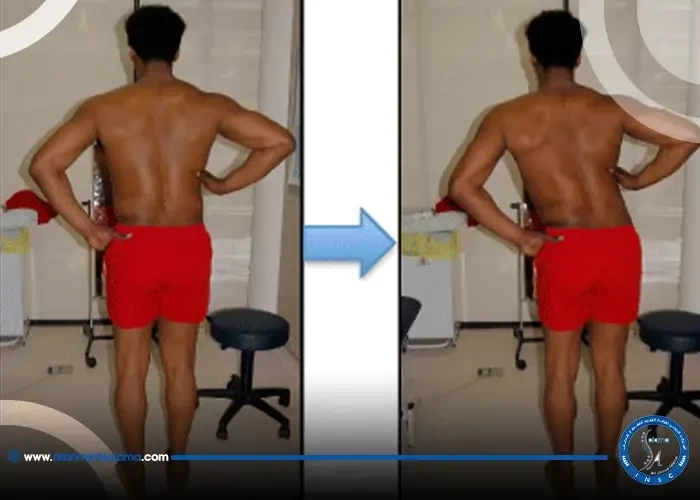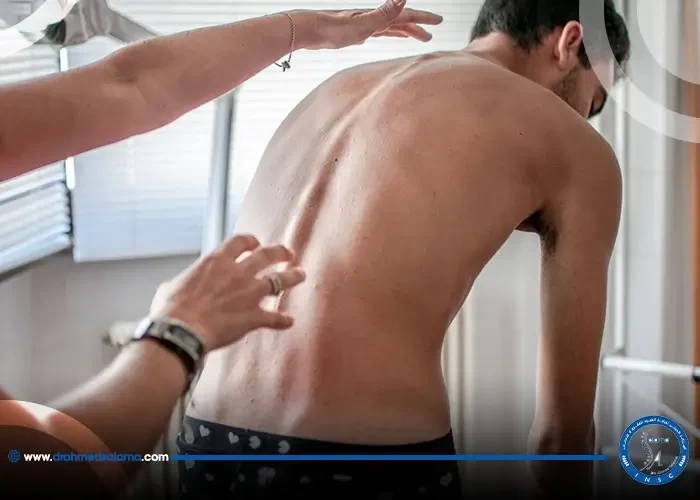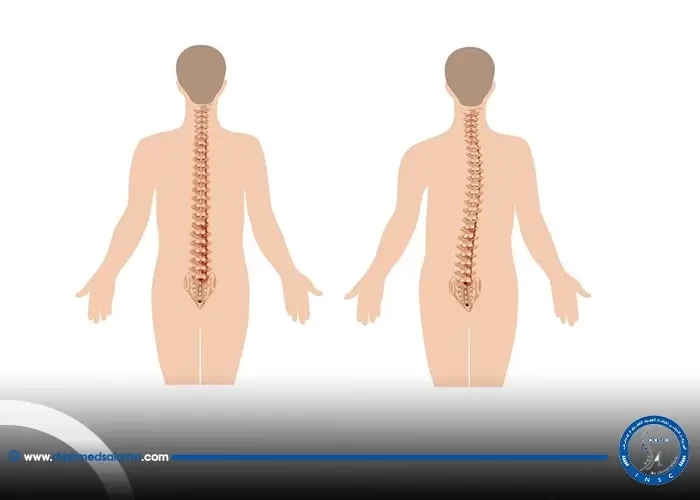Nasr City, 52 El Tayaran Street, in front of the Health Insurance Hospital

Non-surgical vertebral stabilization

Vertebral fractures can cause severe pain and discomfort, making it difficult for individuals to carry out their daily activities. While surgery is a viable option to treat vertebral fractures, it may not be suitable or preferred by everyone. This is where non-surgical treatments come in. Non-surgical treatments for vertebral fractures are a popular choice for individuals looking for less invasive options with quicker recovery times. In this blog post, we will explore some of the non-surgical treatments available for vertebral fractures that can provide relief from pain and help individuals regain mobility.
Introduction to non-surgical treatments for vertebral fractures
Non-surgical treatments are often the first line of defense for managing vertebral fractures, with surgery typically reserved for severe or persistent cases. Some standard non-surgical treatment options include rest, pain medication, muscle relaxants, and bracing to provide physical support. More recent methods like kyphoplasty and vertebroplasty involve injecting bone cement to stabilize the fracture, while radiotherapy may also be used to relieve pain. However, there are still knowledge gaps in the efficacy of these techniques, and NYU Langone recommends that treatment plans be tailored to the individual patient and their specific needs. While surgical interventions may be necessary in some cases, most patients with vertebral fractures can benefit from non-surgical management, helping to alleviate pain, improve mobility, and ultimately achieve a better quality of life.
Standard non-surgical treatment options
Standard non-surgical treatment options for vertebral fractures caused by osteoporosis include bed rest and analgesia, along with the use of a back brace to provide additional support. These treatments aim to alleviate pain and promote healing without the need for surgery. In cases where the fracture is more severe, minimally invasive procedures such as vertebroplasty and balloon kyphoplasty can also be used to restore the height of the damaged vertebrae and stabilize the spine. While surgical intervention may sometimes be necessary, non-surgical options can be effective in managing many cases of vertebral fractures, especially when combined with medication and pain management techniques. Further research is needed to fully understand the optimal approach to managing osteoporotic vertebral fractures and to develop better non-pharmacological and non-surgical treatment options.
Use of back braces and physical support
The use of back braces and physical support is a common non-surgical treatment option for managing spinal compression fractures. In fact, doctors at NYU Langone recommend using back braces and physical activity modifications as part of their management plan for these injuries. Back braces provide additional support and can help alleviate pain by reducing movement in the affected area. Standard non-surgical treatments for vertebral fractures also include bed rest, analgesics, and physical therapy. In more severe cases, doctors may recommend minimally invasive techniques such as balloon kyphoplasty or vertebroplasty. It's worth noting, however, that not all spinal fractures require surgery, and in most cases, compression fractures will heal on their own in about three months with proper care.
Minimally invasive techniques: balloon kyphoplasty and vertebroplasty
When standard non-surgical treatments for vertebral fractures aren't enough, minimally invasive techniques like balloon kyphoplasty and vertebroplasty may be a viable option. These procedures involve the insertion of a small needle into the fractured vertebral body followed by the injection of bone cement to stabilize the fracture. Balloon kyphoplasty involves the use of a balloon to create a space in the vertebral body before cement injection. These methods offer several advantages over traditional surgery, including less pain, less blood loss, shorter hospital stays, quicker recovery times, and reduced risk of complications. While surgical treatments like vertebral fusion may provide greater stability, these minimally invasive techniques have proven to be an effective and safe option for many patients.
Comparison of surgical and non-surgical treatment options
When it comes to treating vertebral compression fractures (VCFs), patients and physicians are faced with the decision of whether to pursue surgical or non-surgical options. While non-surgical management (NSM) is the typical course of treatment for VCFs related to osteoporosis, some patients may require surgery for fractures caused by trauma or severe spinal deformity. However, recent studies have shown promising results for minimally invasive techniques such as balloon kyphoplasty and vertebroplasty, which offer better pain reduction compared to NSM. Despite the development of surgical methods for osteoporotic vertebral fractures, there was no increased risk of adjacent-level fractures after any treatment method. Patients should weigh the pros and cons of both surgical and non-surgical options, taking into consideration the severity and cause of their fracture, along with their personal and medical history. Ultimately, the decision should be made in consultation with a trusted physician.
Medication and pain management
When it comes to managing vertebral fractures, medication and pain management play a crucial role in non-surgical treatment options. Analgesics, such as acetaminophen, can be helpful in controlling acute pain for up to 6-12 weeks. However, pain from a spinal compression fracture allowed to heal naturally can last as long as three months, and therefore other pain management options must be considered. In addition to analgesics, doctors at NYU Langone recommend activity modification and the use of back braces to support the spine during the healing process. Patients with persistent pain may require additional medications, such as opioid analgesics, but these should be used with caution due to the risk of dependence and side effects. Ultimately, medication and pain management must be tailored to each patient's individual needs to ensure a safe and effective recovery.
Alternative procedures: radiotherapy
Radiotherapy is an alternative treatment option for vertebral compression fractures, particularly for patients with vertebral metastases. While it is not as commonly used as surgical or non-surgical interventions, radiotherapy can be a viable option for patients who are not candidates for other treatments. However, it does have its drawbacks, such as the possibility of compression fractures still occurring after treatment. In addition, it is not a stabilizing treatment for vertebral compression fractures. Despite these limitations, radiotherapy is a non-invasive alternative to surgery and can provide pain relief for patients with vertebral fractures. It is important for medical professionals to be familiar with different treatment options and to tailor their approach based on the specific needs of each patient.
Knowledge gaps in non-pharmacological and non-surgical management
Despite the advancements in treating osteoporotic vertebral fractures, there are still knowledge gaps in non-pharmacological and non-surgical management. While back braces, physical therapy, and minimally invasive techniques such as balloon kyphoplasty and vertebroplasty have shown promising results, there is a lack of evidence-based research on their long-term effectiveness. Additionally, there is a need for more research on alternative procedures such as radiotherapy and their potential in managing vertebral fractures. NYU Langone recommends a multidisciplinary approach, incorporating pain management, rehabilitation, and psychosocial support. More research is needed in this area to establish effective non-pharmacological and non-surgical management for osteoporotic vertebral fractures.
NYU Langone recommendations for non-surgical management
NYU Langone's Spine Center takes a conservative approach to managing spine conditions, with spine surgery typically not necessary. Doctors at NYU Langone recommend non-surgical treatment options, such as activity modification, back braces, pain medication, and physical therapy. Additionally, minimally invasive techniques like kyphoplasty and vertebroplasty may be used to alleviate pain and correct spinal deformities. The center also acknowledges the need for further research in non-pharmacological and non-surgical management of osteoporotic vertebral fractures. Overall, NYU Langone's personalized approach to managing spinal fractures emphasizes non-surgical techniques to provide effective pain relief and promote optimal healing.
Further research and recommendations for managing osteoporotic vertebral fractures.
The field of non-surgical management for osteoporotic vertebral fractures is continuously evolving. As more research is conducted, new treatment options are emerging that may improve outcomes for patients. However, there are still knowledge gaps in understanding the most effective non-pharmacological and non-surgical approaches to managing osteoporotic vertebral fractures. To address this, medical professionals must continue to collaborate and conduct research to explore new techniques and treatments. Additionally, organizations such as NYU Langone have provided recommendations for non-surgical management, which can serve as a guiding framework for medical professionals. By staying up-to-date with the latest advancements in this field, medical professionals can ensure that they are providing the best possible care for their patients.
Is walking beneficial after a spinal fusion surgery?
Yes, walking is beneficial after a spinal fusion surgery. The patient can walk daily starting the day after the surgery, but be careful not to engage in strenuous activity to avoid pain
When does a vertebral fracture heal?
The healing time for a vertebral fracture varies from one case to another depending on the patient's health condition, but a vertebral fracture usually heals after a period ranging from 8 to 10 weeks.






